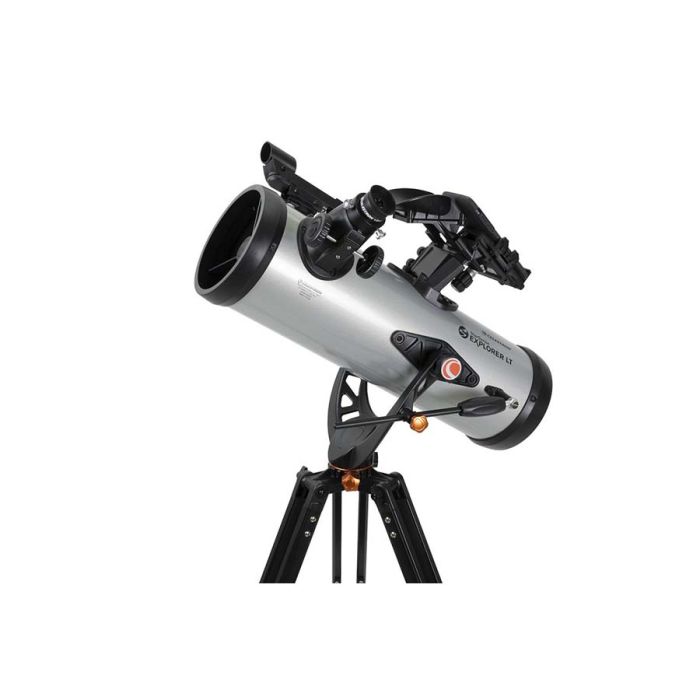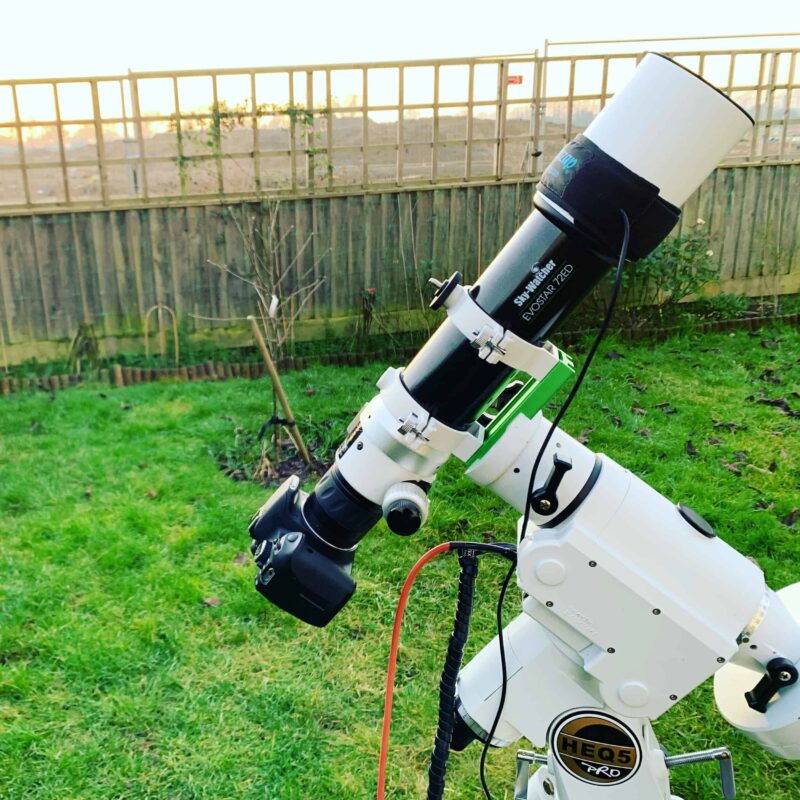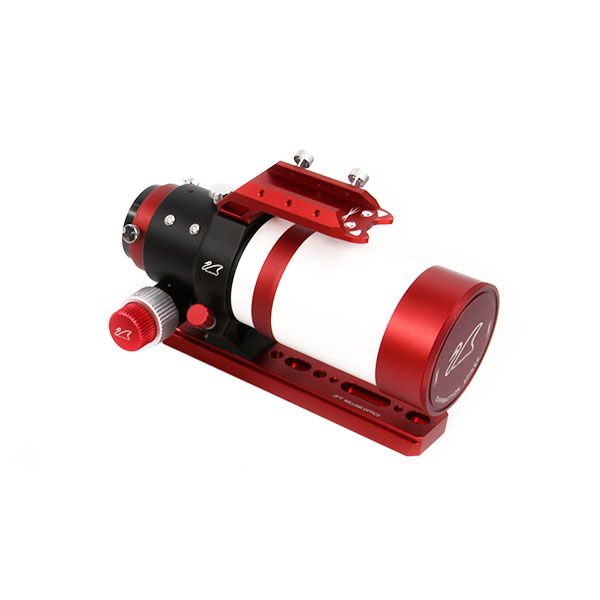Like most serious hobbies, astronomy is notoriously expensive. There are telescopes, eyepieces, filters, cameras, and a seemingly endless array of accessories to separate you from your hard-earned money.
But does it have to be this way? Are there cheap telescopes worth buying? How much do you really need to spend to get up and running? The answers to these questions will differ for each person, dependent on a variety of factors such as your goals, expectations, and experience level.
In this article we’ll look at some inexpensive telescope options, discuss their strengths and limitations, and try to determine if there are indeed any worth buying.
Why Are Cheap Telescopes So Popular?
Probably the most often-cited reason for buying a cheap telescope is to test the waters. This is especially true for telescopes given as gifts; the giver doesn’t want to spend hundreds on an item which might not get used more than once.
While this seems like a reasonable approach, the problem is that cheap telescopes, say under $300 USD, often make so many compromises and impose so many limitations on the user that rather than igniting one’s passion in the hobby, they can extinguish it instead.
A better approach is to be up front with a potential telescope recipient (or yourself) to determine how much interest truly exists. Someone with only a passing interest in astronomy is not likely to spend hours outside at night pursuing this hobby, and a cheap telescope will do little to change this. Conversely, someone with real passion will quickly outgrow the limitations of their cheap telescope.
Drawbacks of a Cheap Telescope
Telescopes in the lowest price brackets make many compromises to keep costs down:
- Flimsy mount heads: This might be the biggest deal-breaker, since the mount head is what allows you to move the telescope and keep it on target. Many cheap telescopes are hard to aim and don’t hold their position, making it difficult to locate and track objects. An imprecise mount is the fastest way to take the fun out of this hobby.
- Wobbly tripods: Pretty much a given at the sub-$300 range, a wobbly tripod will guarantee lots of shaking every time you touch the telescope. One way around this is to look at tabletop Dobsonian telescopes (see below).
- Small apertures: While this varies from model to model, cheap telescopes tend to be on the small side. This may not be a bad thing if you need something portable, but brightness and resolution will suffer.
- Poor optics: The heart of every telescope is the optics, and on a cheap telescope you may encounter issues such as low-quality optical coatings or misaligned mirrors which can be difficult to adjust. This can cause reduced contrast or comet-shaped stars.
- Inferior accessories: This will usually provide the final blow to your hopes of enjoying a cheap telescope. Manufacturers deliberately provide very short focal length eyepieces and image amplifying lenses to make outrageous magnification claims (more on this below). Some will even include dangerous solar filters which screw onto the eyepiece; destroy these immediately!
Types of Cheap Telescope
The Hobby Killer
Probably the most common type of telescope on the market, these are the worst of the worst. While there is no single agreed-upon design for hobby killers, most of them are small refractors mounted on a stamped piece of forked metal with a thin wooden tripod.
Once you’ve used one, you’ll recognize them on sight. They are usually packaged in boxes advertising some ridiculously high magnification. As a rule of thumb, avoid any telescope which makes magnification claims on the box!
Cheap telescopes are seldom capable of supporting magnifications beyond 100x and claims to the contrary amount to false advertising.
Travel Scope
These are usually ultra-short refractors made mostly of plastic with apertures of 70mm or less, mounted on lightweight camera tripods and often supplied with backpacks. Not good for much other than a peek at the moon. If you are considering such a telescope, consider binoculars instead.
Powerseeker/Astromaster
These popular product lines from Celestron are widely available in department stores and online retailers. While they aren’t the worst you can get, the flimsy tripods, poor accessories, and hard-to-aim mounts make them more of a chore than a joy to use.
This at least has been my experience; your mileage may vary. There are also several models to choose from and some will be better than others. If possible, try before you buy.
Tabletop Dobsonian
Out of all the cheap telescopes, this category often gets the highest recommendations. Dobsonian mounts are inherently more stable than tripods, and certainly more intuitive for a beginner than an equatorial mount.
The cheapest ones, sold under names like Firstscope and Funscope, are too small to be of much use, but once you get to something like the Starblast 4.5 or Heritage 130 you are into real telescope territory.
Telescopes for Children
Using a telescope requires patience and precision, qualities which are often lacking in young children. It is unrealistic to buy a telescope for a child and expect it to get much use.
There is also the possibility for misuse, such as pointing at the sun or spying on people, in unsupervised situations. Very young children are better off with toy telescopes. If you want your child to use a real telescope, buy one with the intention of using it with them.
Recommendations
In the world of cheap telescopes, there is far more bad than good. But if you shop around and do your research, there are some worthwhile product lines to explore. Here are a few examples:
Celestron StarSense Explorer

The 4.5” tabletop model is a popular recommendation for $350. Portable and kid-friendly. Note that the f/4 optics won’t provide good closeups of planets, and also require a soft touch on the focuser as depth of focus is small.
You can also control this telescope with your smartphone, which is great for getting tech enthusiasts or younger people into astronomy.
Sky-Watcher Heritage 130

More of a serious telescope than the Starblast, but still small and affordable while providing better light grasp and more magnification. Celestron StarSense Explorer LT 80AZ. I generally don’t recommend telescopes with stamped steel mount heads, but this one adds the advantage of a guidance system using a cell phone app. The long focal length will provide good planetary views but will also make it harder to aim.
Celestron StarSense Explorer LT 114

Similar to the StarSense telescope above, but this time the telescope is mounted on a tripod rather than being tabletop.
Again, you can mount your smartphone to the telescope to take amazing pictures of the night sky, while enjoying those incredible views through the eyepiece.
Astrophotography with a Cheap Telescope
Nowadays, even the worst telescopes are often sold with adapters to attach a camera or cell phone. Don’t be fooled; these accessories are worthless and are there only to entice shoppers.
You can take pictures through any telescope, but astrophotography is a tricky business and I would advise against buying a cheap telescope with this as your main goal. Instead, buy the telescope which makes the most sense for visual use and figure out its photography potential afterwards.
While some telescopes can be versatile, in general the best visual telescopes are not the best astrophotography telescopes and vice versa. If you want to do both, it makes sense to have 2 telescopes.
Here are some entry level astrophotography telescopes that I recommend – remember, there’s no such thing as cheap when it comes to astrophotography!
Sky-Watcher Evostar 72ED

I’ve used this telescope for years and it was the first astrophotography telescope that I bought. Lots of people use this telescope as their first, and it’s not hard to see why. It gives you enough focal length to take some incredible images of deep sky objects, without costing a fortune!
I have a page dedicated to this telescope, which you can find here.
William Optics ZenithStar 61mm

Another entry level refractor telescope, but this time from William Optics. The benefits of this telescope over the Sky-Watcher 72ED is that this ZenithStar comes with FPL-53 glass which adds better colour correction, meaning you’ll suffer less with chromatic aberration.
William Optics RedCat 51mm

Probably the most portable deep sky astrophotography telescope that there is. So much so, it looks more like a camera lens than a telescope, but make no mistake. As a triplet APO refractor, the RedCat is capable of taking incredible images of the night sky, particularly with that wide field of view.
The Bottom Line
Whether buying for yourself or as a gift, cheap telescopes should be approached with caution. However, even a high-end telescope will not overcome a lack of interest or enthusiasm. When buying a telescope, you should consider the user’s capabilities, goals, and expectations and then budget accordingly rather than buying on price alone.

